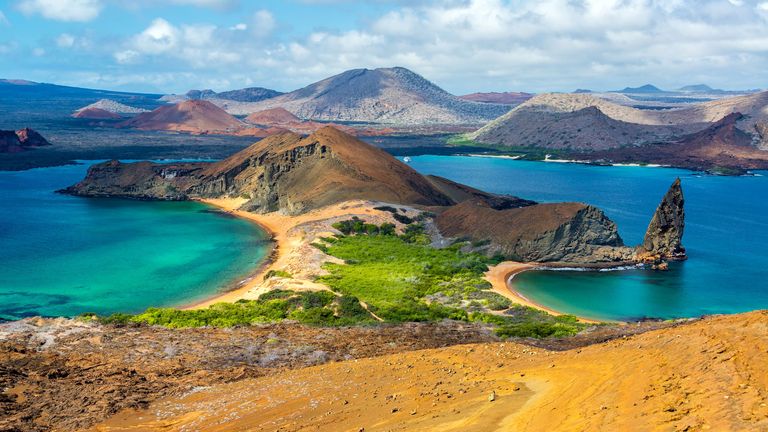Blackberries and vampire flies threatening precious Galapagos ecosystems | World News

Invasive blackberry bushes and blood-sucking vampire flies are threatening the precious ecology of the Galapagos Islands – with several species of animals already endangered.
These two species were introduced to the Ecuadorian archipelago by accident decades ago, but have slowly caused havoc as no measures were taken to immediately control their spread.
Small flies are currently one of the most challenging conservation issues facing fragile ecosystems.
Feeding on blood to breed, this fly threatens more than 20 species of sparrows, one of the island’s iconic birds, and has caused their populations to dwindle.
It leaves its larvae in the nests of birds, some of which are endangered, then infects the chicks to the point of killing them.
Six years ago, scientists analyzed the effectiveness of a wasp in controlling flies, but they wanted to make sure they didn’t affect other insects endemic to the archipelago before introducing them. into use.
“The Galapagos is at risk,” warned the CEO of the Charles Darwin Foundation, Rakan Zahawi.
“I say that not just to create some vision in that sense, but because we really have strong challenges in the Galapagos.”
Blackberry killer
He has also warned about invasive blackberries, which destroy crops and other plants.
As a result, large areas have been turned into blackberry forests, with birds dispersing the tree’s seeds across different areas after eating the fruit.
Over the course of 13 years, scientists have been testing a Chinese fungus designed to only attack plants, but the research has yielded no definitive results.
Read more:
‘Carnivorous’ spider crab invades French waters
Cornish castles at risk due to climate change
Rare soft shell turtle bred after 20 years
More than 20 scientific institutions from around the world have been engaged in finding solutions to “sizable challenges,” explained Mr. Zahawi.
The Galapagos Islands are biologically diverse and home to many species, such as its iconic giant tortoises and iguanas.
This is because it has many different habitats, including coral reefs, highland forests, sand dunes, and scrublands.
In 1979, this group of islands was declared a natural heritage of humanity for animals, plants, terrestrial and marine species.






